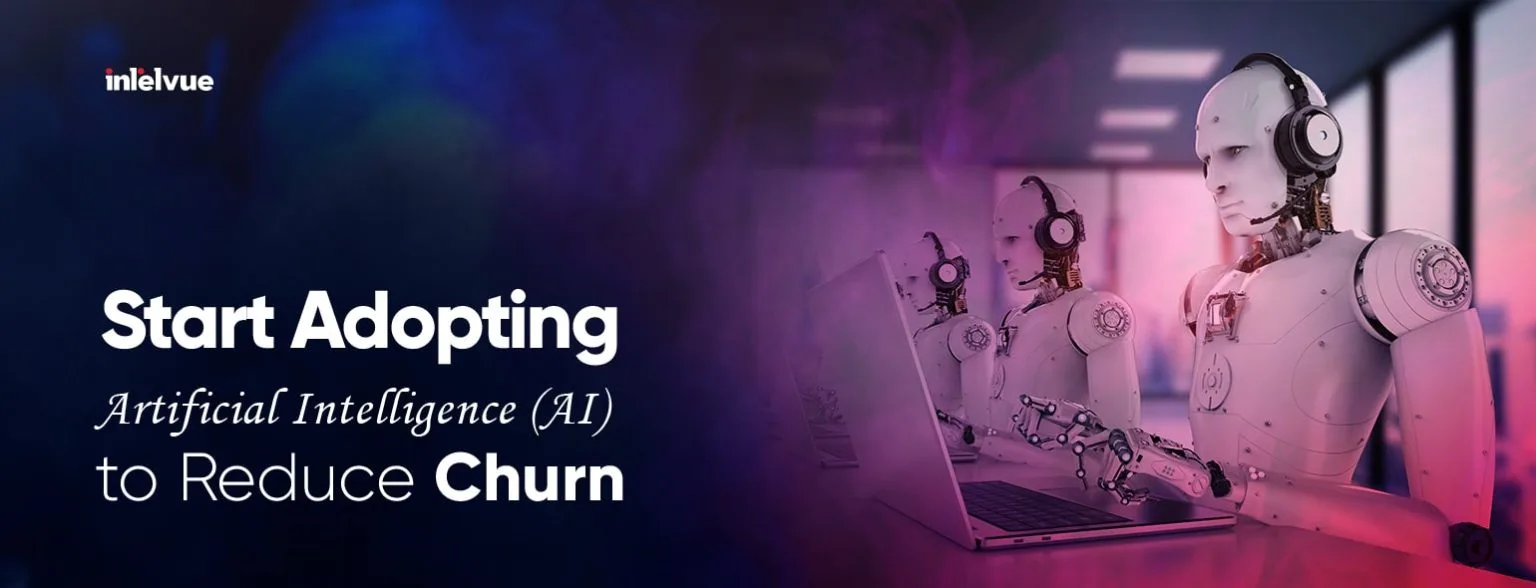
Can Artificial Intelligence reduce churn? The question may seem strange for many, but the answer is yes, it can. When it comes to predicting customer behavior, the use of Artificial Intelligence has been vaunted as the panacea against all sins. At Intelvue, we have been evangelizing and pruning away at implementing AI and its many varied uses in day-to-day functions. But what does AI have to do with churn? A lot if you think about it. If there ever was a tool meant to predict human behavior, Artificial Intelligence should definitely be it. So let’s deep dive into how AI can be used to empower your business to move towards customer lock-in and reduce your churn rate.
Preparing to Train Your AI Model: Your Dataset
The first step in using AI to reduce churn is to train your AI with previous data, allowing it to learn from your past customers. The more data you have, the better your AI platform can learn. Regardless of your business, you’ll want to include basic information; your customer’s name, address, and other contact information, and of course, whether they churned. Other data you should consider using to train your model includes:
- Financial data: The customer’s lifetime value, purchase frequency, and spend across categories
- Demographic data: The customer’s industry, size/number of employees, stage of maturity (e.g., startup, growing, established), and corporate structure (e.g., privately held, publicly traded)
- Loyalty data: Purchase information gathered through a loyalty program including top sales locations (e.g., online, offline (including specific geographic location)), product SKUs, and top categories
- Subscription information: Contract start and end dates, type of contract (e.g., monthly, quarterly, annual), and any previous incentives or discounts
- Marketing data: Open rates, clickthrough rates, and conversion rates
Ultimately, the goal is to provide your AI platform with data that gives a comprehensive view of your customer and their interactions with your business.
Predicting Future Churn
Once you’ve uploaded your dataset and trained your model with the tool, you’ll be ready to use it to predict future churn. Some platforms can generate prioritized lists of customers ranked by their likelihood to leave. In these lists, patterns start to emerge that would have previously been invisible to human eyes. You can more easily notice areas in the data where customers share common criteria.
For example:
- Your model may also show that customers who have ignored/not opened any email communications from your company in the past six months are more likely to churn.
- Your AI model may show you that privately-held customers are less likely to churn, while publicly-held customers are more likely to do the opposite.
As you can see, your AI model shows you the pattern and shows you what’s happening, but it doesn’t identify why—it’s up to the humans at your business to interpret the data and determine next steps.
Taking Action To Reduce Customer Churn with AI
After identifying which customers are most likely to churn, it’s time to address it. Everything from customer communications to user experience to individually-focused retention strategies for large or high-profile clients is on the table; you’ll want to work across business units to develop the best processes for consistently preventing churn once you find those customers.
Following on the examples given above, you may decide the best approach is to:
- Reach out to customers who have ignored email communications via other methods, including telephone calls and handwritten notes, to re-establish contact and rapport.
- Review metrics and determine that sales to privately-held companies are more lucrative, have higher margins, lead to longer-term relationships, and put less of a strain on support—ultimately deciding to allow the publicly-held companies to churn and to focus on retaining and recruiting privately-held companies.
There’s no one-size-fits-all response to stopping a customer on their way out the door; your response and approach will depend on the situation’s specifics.
An Ongoing Effort
Preventing customer churn with AI is not a one-and-done process; it’s ongoing. It’s up to you to determine how often (for the next month, for the next quarter) you want to predict churn and take action, then schedule a time to start the process all over again. If you neglect to do this regularly, you’ll end up right back where you started—bleeding customers and watching your customer acquisition costs continue to rise.
Marketers Have Helped in Fighting Churn
Marketers looking for help in fighting churn can now turn to AI for assistance. By training a model with existing data, you’ll provide your AI platform with the input it needs to make accurate predictions. Once it identifies customer patterns, you’re better equipped to determine the next steps and address issues. And for best results, put churn prevention on your calendar and stick to it; like other marketing tasks, the adverse effects can quickly add up if it’s not done regularly.